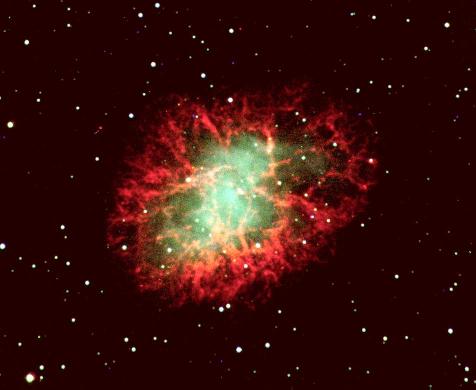Credit & Copyright: S. Kohle, T. Credner et al.
(AIUB)
Explanation:
The Crab Nebula, filled with mysterious filaments, is the result of a
star that exploded in 1054 AD.
This spectacular supernova
explosion was recorded by Chinese and (quite probably) Anasazi Indian astronomers.
The filaments are mysterious because they appear
to have less mass than expelled in the original supernova
and higher speed than expected from a free explosion.
In the above picture, the color indicates what is
happening to the electrons in different
parts of the Crab Nebula.
Red indicates the electrons are recombining with protons to form neutral hydrogen,
while green indicates the electrons are whirling around the magnetic field
of the inner nebula. In the nebula's
very center lies a pulsar: a neutron star rotating, in this case, 30 times a second.
Authors & editors:
Robert Nemiroff
(MTU) &
Jerry Bonnell
(USRA)
NASA Web Site Statements, Warnings,
and Disclaimers
NASA Official: Jay Norris.
Specific
rights apply.
A service of:
LHEA at
NASA /
GSFC
& Michigan Tech. U.
Based on Astronomy Picture
Of the Day
